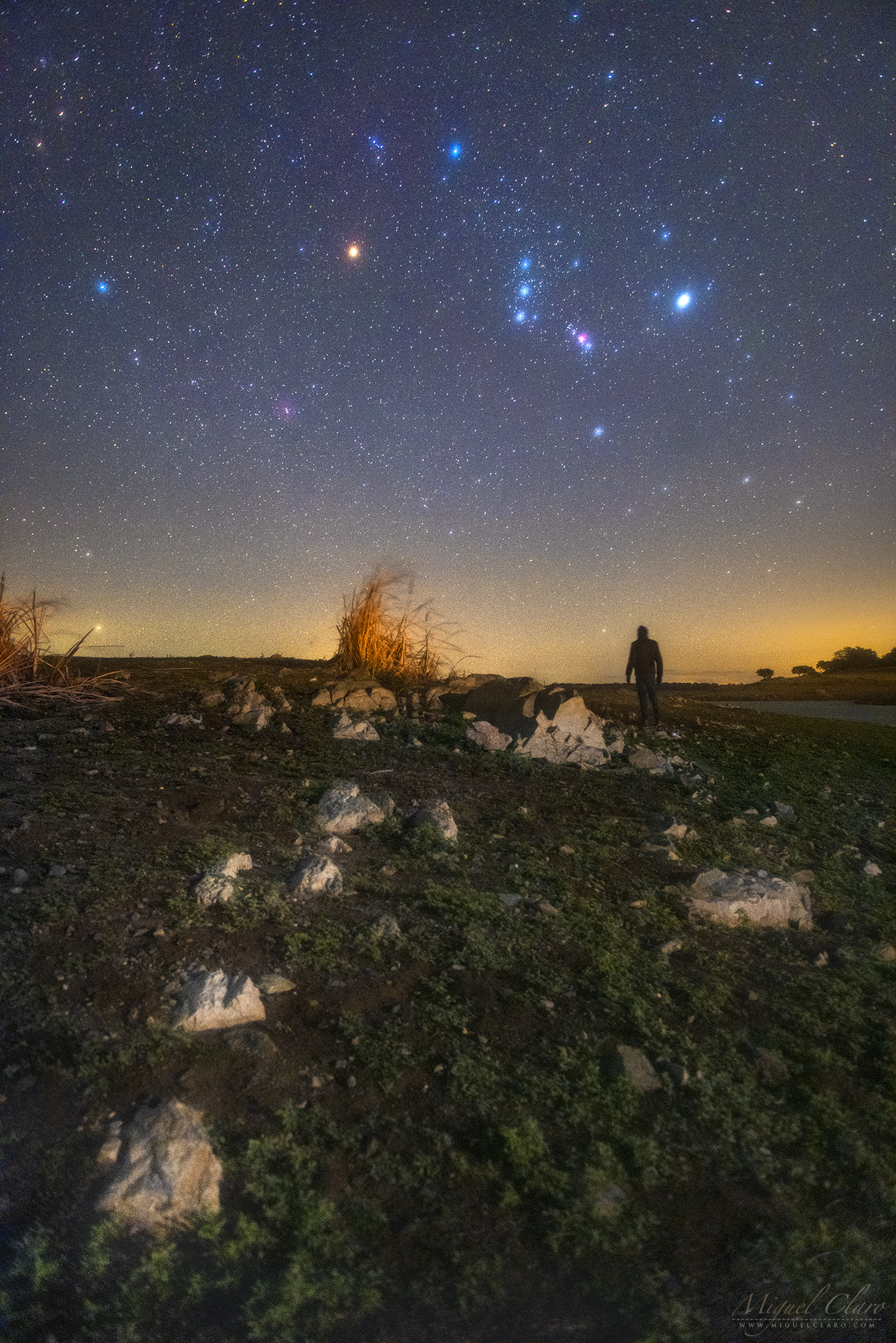Orion and its dimming star Betelgeuse shine over a stargazer in this sentimental night-sky photo

Miguel Claro is a professional photographer, author and science communicator based in Lisbon, Portugal, who creates spectacular images of the night sky. As a European Southern Observatory photo ambassador, a member of The World At Night and the official astrophotographer of the Dark Sky Alqueva Reserve, he specializes in astronomical "skyscapes" that connect Earth and night sky. Join Claro here as he takes us through his photograph "Orion in the Winter Sky and the Story Behind the Fainting Star Betelgeuse."
Captured during one of my private workshops on Dec. 12, 2019, this image shows a lonely stargazer enjoying the most beautiful constellation of the winter sky: Orion, the hunter.
The photo, captured from one of the landscapes of Dark Sky Alqueva Reserve in Portugal, features the bright star Betelgeuse, which is located on the hunter's left "shoulder." Many amateur and professional astronomers since last October have been reporting a decrease in brightness of the yellow-orange star, giving space for some speculation that the star is about to explode.
Related: The dimming star Betelgeuse is acting weird. Here's how to spot it in Orion's shoulder.
According to an article published by National Geographic last December, "decades of photometric data show that Betelgeuse brightens and dims in cycles, with one notable cycle vacillating on a roughly six-year time scale and another rising and falling every 425 days or so."
Scientists suspect that the red supergiant Betelgeuse has recently dimmed quite dramatically because those two periodic cycles are overlapping at minimal brightness, according to a report published in the Astronomer's Telegram by Edward Guinan, a professor of astronomy and astrophysics at Villanova University in Pennsylvania.
Astronomers have long suspected that the star might explode sometime in the next million years. It's also possible that Betelgeuse has already exploded and we just haven't seen it happen; because the star is 600 light-years away, it takes 600 years after something happens on Betelgeuse for light from that event to reach Earth. But if and when astronomers do witness the star's explosion, it will be the most astonishing astronomy event of all time.
Breaking space news, the latest updates on rocket launches, skywatching events and more!
When Betelgeuse explodes, turning into a supernova, it will briefly shine even brighter than the full moon. Then, the star will vanish forever, leaving an "empty space" in our hearts — and in the mythic Orion constellation, which will still be visible in the night sky for us and many future civilizations. Without his left shoulder, however, the hunter will never look the same.
To capture this single shot, I used a Nikon D810A camera with the ISO set to 2500 and a 24-70mm lens set to 26mm at f/2.8. The exposure time was 15 seconds.
- Jupiter and Orion shine over Canary Islands in dazzling night-sky photo
- Bright star Betelgeuse might be harboring a deep, dark secret
- Dying star Betelgeuse keeps its cool ... and astronomers are puzzled
To get a print of Claro's amazing astrophotography, visit his fine-art prints store at www.miguelclaro.com/prints. Follow us on Twitter @Spacedotcom and on Facebook.
OFFER: Save at least 56% with our latest magazine deal!
All About Space magazine takes you on an awe-inspiring journey through our solar system and beyond, from the amazing technology and spacecraft that enables humanity to venture into orbit, to the complexities of space science.
Join our Space Forums to keep talking space on the latest missions, night sky and more! And if you have a news tip, correction or comment, let us know at: community@space.com.
Miguel Claro is a professional photographer, author and science communicator based in Lisbon, Portugal, who creates spectacular images of the night sky. As a European Southern Observatory photo ambassador, a member of The World At Night and the official astrophotographer of the Dark Sky Alqueva Reserve, he specializes in astronomical skyscapes that connect Earth and the night sky.


